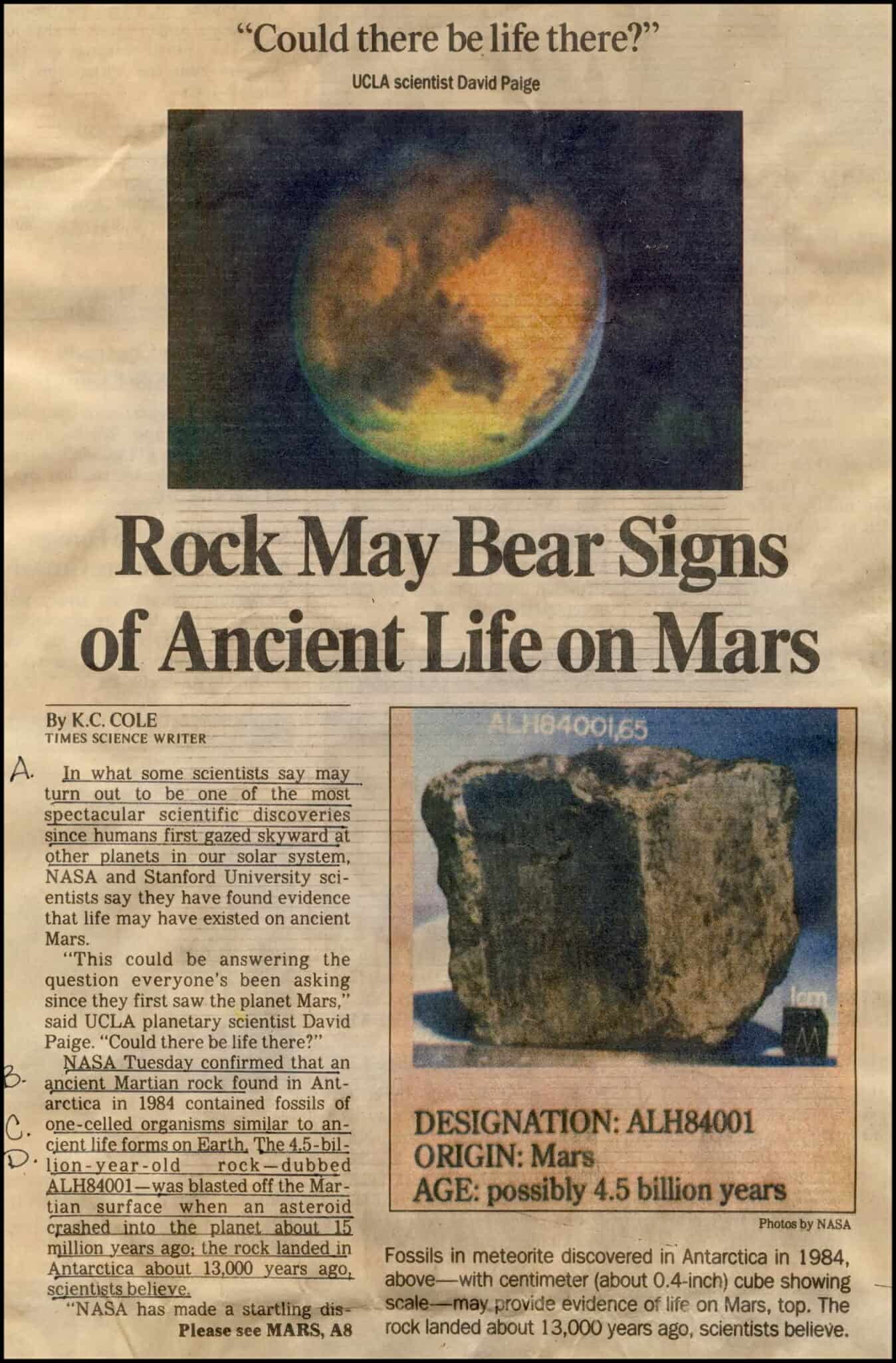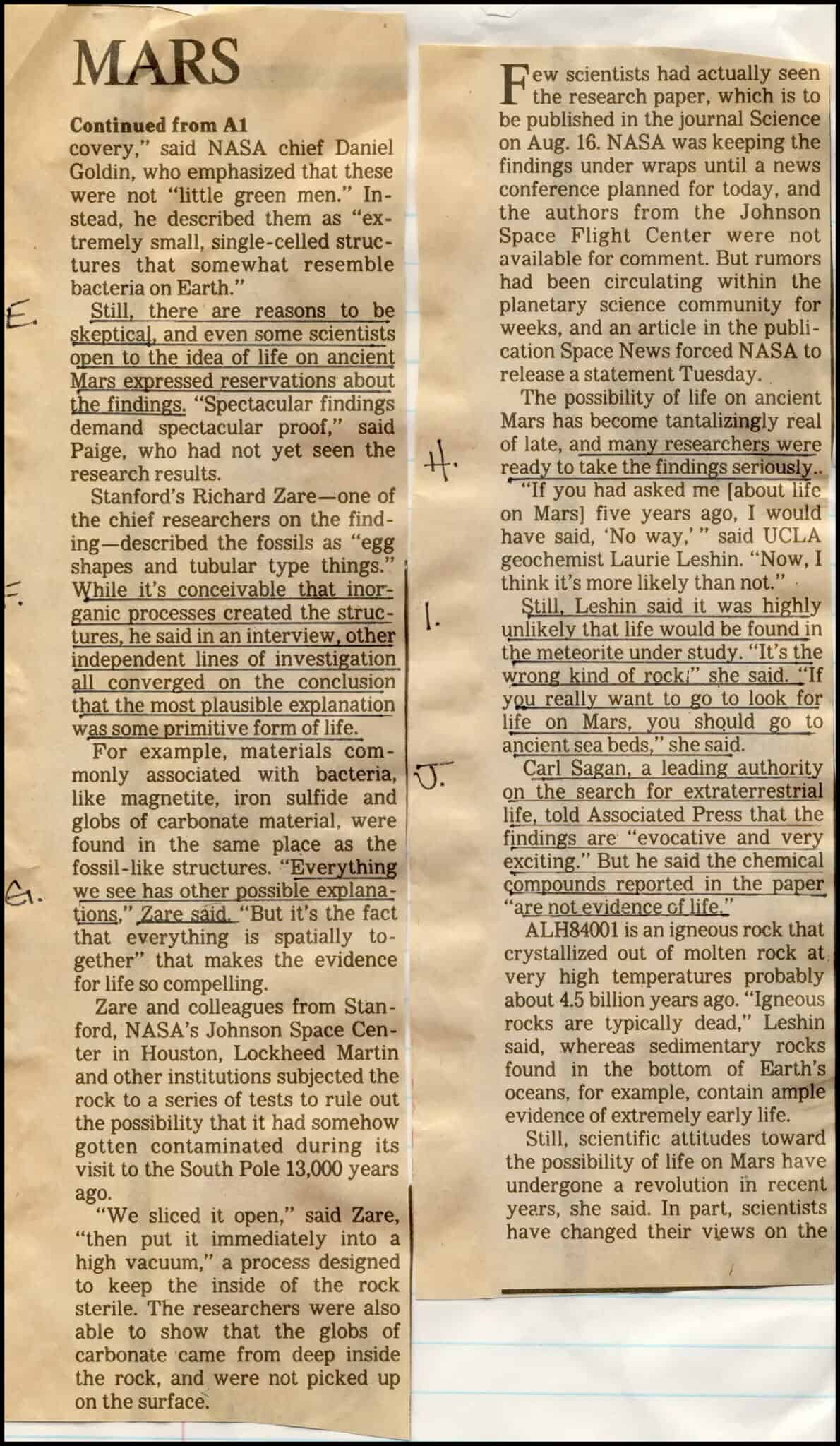Kept this article from many years ago (see below). The digital article can be found here:
There are better responses to the issue of this rock than I offer here — see APOLOGETIC PRESS (1996), APOLOGETIC PRESS (1997), REASONS TO BELIEVE (1997), CREATION.COM (1996), CREATION.COM (2001) — my only point is contamination… both of Mars (through solar winds carrying very small particulates) as well as contamination on entry into our atmosphere.
Again, the reason I kept this back in 1996 is because I surmised that small [very small] bacteria could make it to our very highest atmosphere and be flushed out across the solar system via solar winds. While some reject the following possibilities, here are a couple mechanisms that could transfer bacteria into the upper stratosphere that could likewise get into any meteorite coming into our atmosphere: volcanoes, blue lightning, monsoons and tropical storms.
Here are some examples of bacteria surviving way up in our stratosphere:
Three new species of bacteria, which are not found on Earth and which are highly resistant to ultra-violet radiation, have been discovered in the upper stratosphere by Indian scientists.
[….]
In all, 12 bacterial and six fungal colonies were detected, nine of which, based on 16S RNA gene sequence, showed greater than 98% similarity with reported known species on Earth. Three bacterial colonies, namely, PVAS-1, B3 W22 and B8 W22 were, however, totally new species. All the three newly identified species had significantly higher UV resistance compared to their nearest phylogenetic neighbours. Of the above, PVAS-1, identified as a member of the genus Janibacter, has been named Janibacter hoylei. sp. nov. The second new species B3 W22 was named as Bacillus isronensis sp.nov. and the third new species B8 W22 as Bacillus aryabhata…
Another example:
…Researchers from the Georgia Institute of Technology, supported by a NASA research grant, examined air samples collected by a plane flying during hurricanes miles above Earth. They found that living cells accounted for about 20 percent of of the storm-tossed microbes.
“We were not expecting to find so many intact and alive bacterial cells at 10,000 meters,” says Kostas Konstantinidis, a microbiologist at the Georgia Institute of Technology.
Konstantinidis and his team are particularly interested in how microbes contribute to cloud formation and precipitation. Nuclei in bacteria in the air initiate condensation. Some scientists now believe microbes may play a major part in meteorology. “They have great potential for affecting cloud formation and the climate,” Konstantinidis adds.
Meanwhile, Smith is intrigued by how microbes survive or perhaps repair themselves after days-long journeys in the harsh radiation of the upper atmosphere. A NASA project, EMIST (Exposing Microorganisms in the Stratosphere), spearheaded by Smith, has twice carried spore-forming bacteria to 125,000 feet above the New Mexico desert on a balloon to investigate their survival.
For NASA, the work is related to planetary protection. If a spacecraft contaminated with Earth bacteria reaches Mars—which has conditions similar to Earth’s stratosphere—and the bacteria survive, it could complicate our search for evidence of life on Mars or even kill off native microbes, if they exist…
CLICK TO ENLARGE


